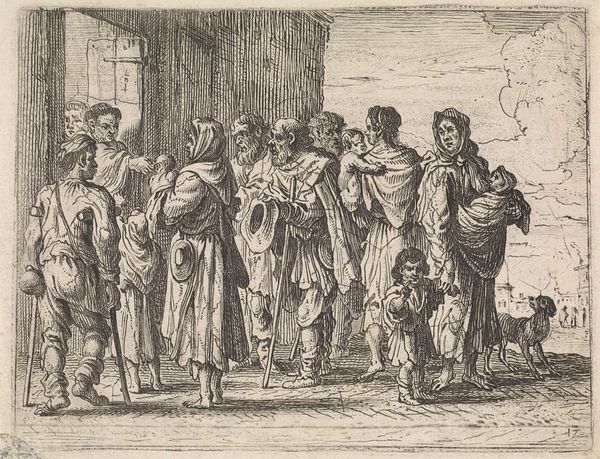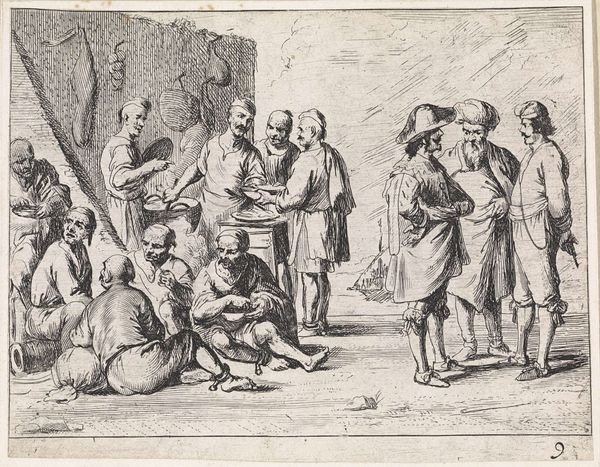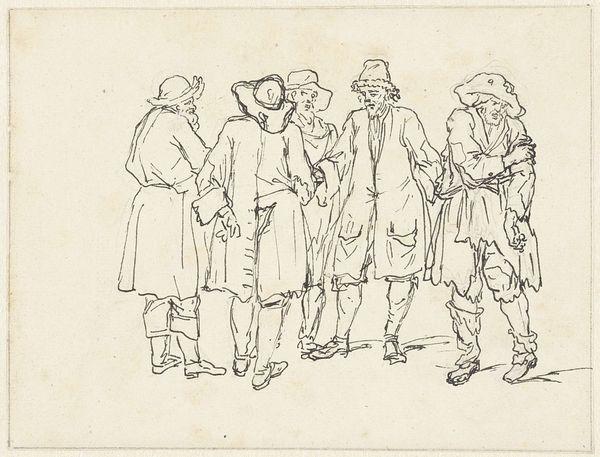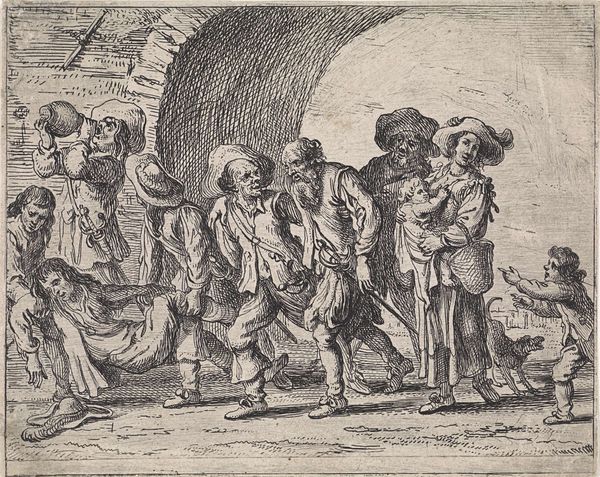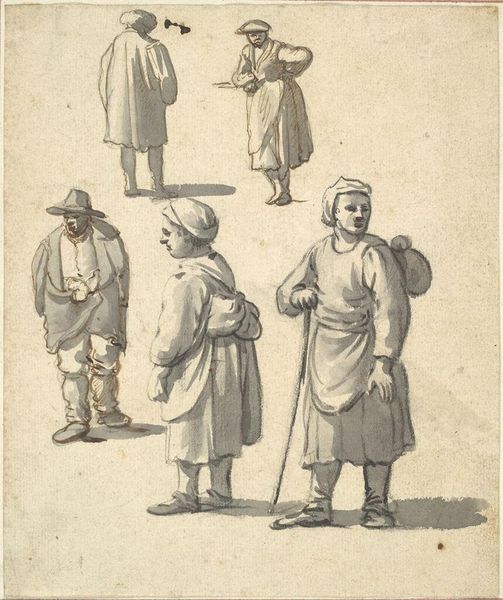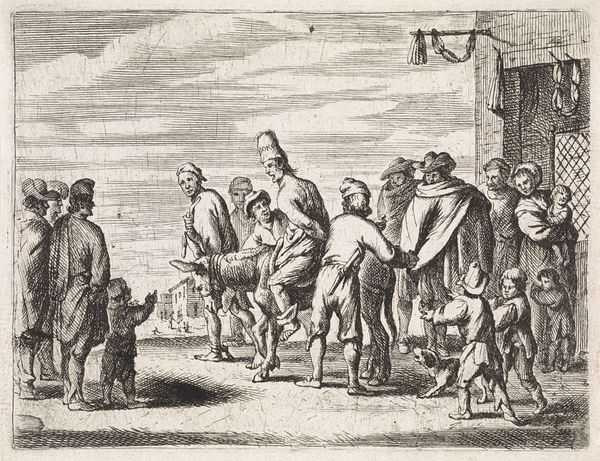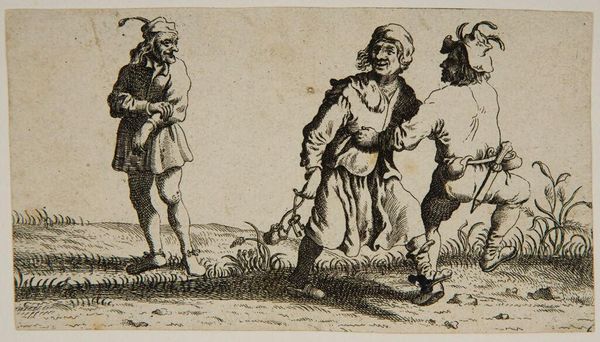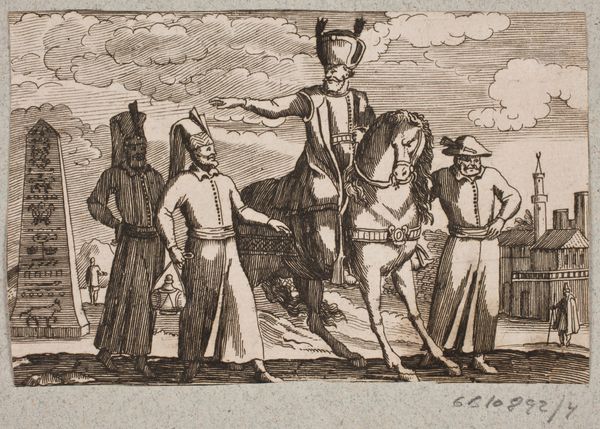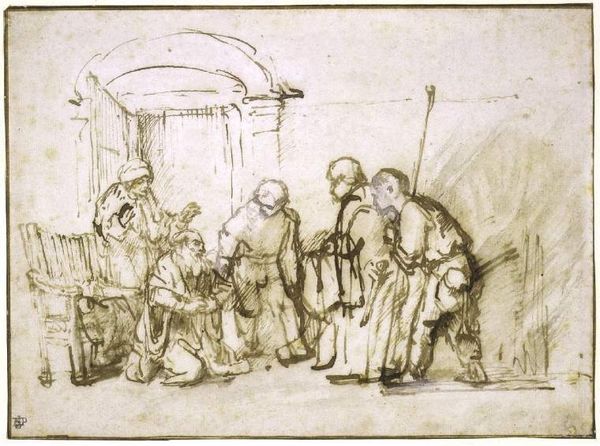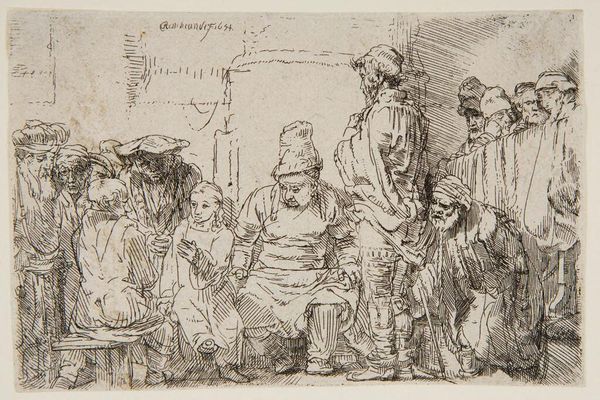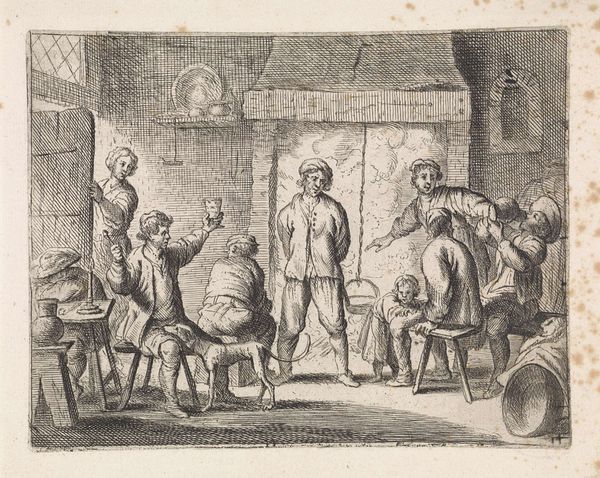
drawing, ink
#
portrait
#
drawing
#
figuration
#
ink
#
orientalism
#
genre-painting
Dimensions: 132 mm (height) x 179 mm (width) (bladmaal)
Editor: Domenico Brandi’s “Five Orientals,” made sometime between 1684 and 1736, is a delicate ink drawing. What immediately strikes me is the artist's use of line; it's so fluid and evocative, creating a real sense of movement. How would you interpret Brandi's formal approach to this piece? Curator: Certainly. What draws the eye, initially, is the orchestration of line. Brandi’s use of varied line weights creates depth and shadow within a predominantly monochromatic palette. Observe the composition. The figures are grouped centrally, commanding the picture plane, and the spatial arrangement, while lacking perspective in the modern sense, relies on overlapping forms to suggest depth. Consider how the artist captures the textures of the clothing through rapid, calligraphic marks. Editor: I notice the figures are not realistically rendered, more like suggestions of form. Is there a reason Brandi may have leaned into abstraction, in this way? Curator: Precisely. This deviation from strict representational accuracy emphasizes a focus on the inherent qualities of the medium itself. It highlights the drawing as an artwork in its own right, independent of the figures' cultural identities, their “oriental” appearance notwithstanding. Does the efficiency and almost frenetic energy of line convey something in addition to form? Editor: Perhaps an underlying sketch quality adds a special urgency? Thank you, I see the dynamism created through line and form prioritization and its effect in minimizing other aspects. Curator: Indeed, by prioritizing form, the artwork prompts us to contemplate how an artist can evoke an entire world of meaning through deceptively simple means. A fruitful discussion.
Comments
No comments
Be the first to comment and join the conversation on the ultimate creative platform.
